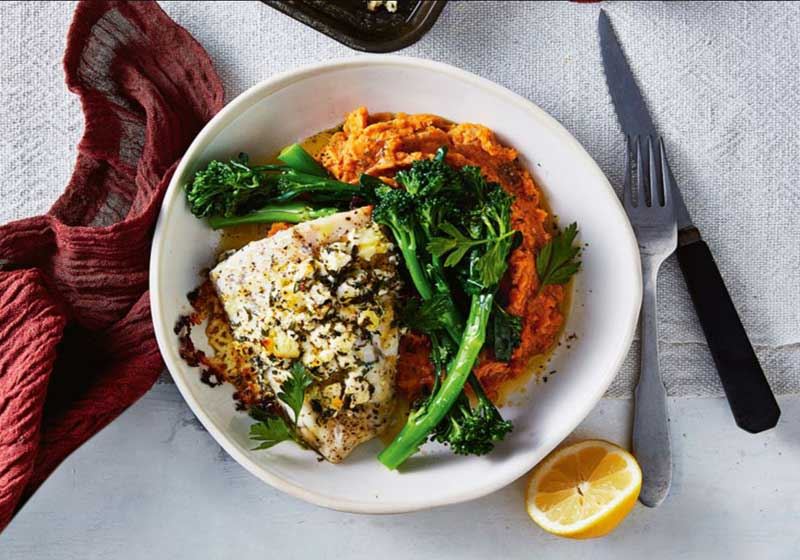Ever wanted to master sushi at home? Well, we're bringing you one of the best masterclasses to help you achieve at home sushi success! We've teamed up with Adam Lane, Chef de Cuisine at cutting-edge Japanese restaurant, Kiyomi at Jupiters Gold Coast to step-by-step teach you how to create an uramaki (inside-out) sushi roll.

Chef de Cuisine, Adam Lane. Photo: Remco.
Spicy Tuna and Avocado Uramaki:


Ingredients:
Sushi Su (sushi vinegar):
50 g sugar
25 g salt
150 ml rice wine vinegar
(you can buy this mixture pre-made from an Asian grocery).
Sushi Rice (short grain rice). Chef's Tip: the most important ingredient when making sushi is the rice. Ideally, you should use short grain rice. At Kiyomi, we use a blend of Tamanishiki and Yumepirika, however, you can buy decent quality sushi rice from Asian supermarkets. Nishiki and Sunrice's "Koshihikari" are good brands to look out for.
Tuna
Half an Avocado
Japanese Mayonnaise
Wasabi
Chilli paste (optional)
Gari (pickled ginger)
Soy sauce
Bamboo mat (makisu - sushi mould)
Nori
Sharp Knife
Plastic wrap
Washing and Cooking the Rice:
When washing the rice, use a strainer or colander and a bowl then, wash under cold running water, gently stirring and mixing the rice with your hand until the water runs clear.
At Kiyomi, we leave the uncooked rice in the fridge overnight. This helps soften the grains and is great to do if you have enough time.
Alternatively, you can add the measured amount of water and leave to soak for 1 hour before cooking.
Cook the rice in an electric rice cooker, and then leave it covered in the pot for 15 minutes. Alternatively, you can cook it in a saucepan using the absorption method.
Preparation:
While the rice is cooking, start to prepare the other ingredients.
Sushi Vinegar: combine rice wine vinegar, sugar and salt. Mix until all is dissolved.
Spicy Mayonnaise: mix good quality Japanese mayonnaise with your favourite chilli paste to the desired taste (normal mayonnaise can be used if preferred).


Tuna: cut the fresh tuna into small pieces, and then carefully beat with your knife to gain a finer consistency. If there is sinew in the tuna, scrape the flesh off with a spoon. Combine the tuna and spicy mayonnaise.
Avocado: cut the avocado into quarters and peel. Thinly slice, and then fan out on to plastic wrap (you can cut the avocado into 12 and place inside the roll if you prefer).


Seasoning the Rice:
Place the cooked rice in a wooden, metal or glass bowl. At this point, the rice will be too hot to add the sushi vinegar. You can leave it covered with a damp cloth or use a fan to cool the rice to the desired 40 degrees, or body temperature.
When adding the sushi vinegar, use a wooden spoon to spread the sushi vinegar evenly over the rice.
Next you need to gently “cut” the rice with the spoon and break up any large clumps that have formed. Gently fold the rice, so the vinegar can evenly coat each grain.
Set aside in a bowl covered with a damp cloth. You do not want to put sushi rice in the fridge, ever!


Rolling the Sushi:
Wrap the bamboo mat (makisu) in plastic wrap to prevent the rice sticking. On that, place 1/2 a nori sheet shiny side down (you can use a sushi mould if you need to).
Wet your hands, and clap them together to get rid of any excess water. This will help prevent the sushi rice sticking.
Scoop out approximately 100 g of sushi rice, and mould into a ball.
Place at one end of the nori sheet and gently spread out evenly over the nori. Be careful not to break up the rice grains. Turn the nori over.


Arrange the tuna in a line. Now, pick the edge of the sushi mat up, this will lift the nori slightly. Next you need to start to roll the sushi whilst keeping the ingredients in place.
After finishing the roll, use the bamboo mat to gently firm the rice, though be careful not to push too hard. You don’t want the rice to be too dense. Remove the bamboo mat.


Place the sliced avocado and the plastic wrap over the roll. Once again, use the mat to gently firm the roll.

With the plastic still on, cut the roll into 8 pieces.
Arrange on the plate and serve with soy sauce, wasabi and gari (pickled ginger).

Enjoy! If you've completed this masterclass, give us a heads up on instagram via @ausgoodfood or #agfg, post to our facebook page here, or email us on editor@agfg.com.au. We'd love to share your creations!
Photos supplied by Kiyomi with the help of Wonderland PR.







